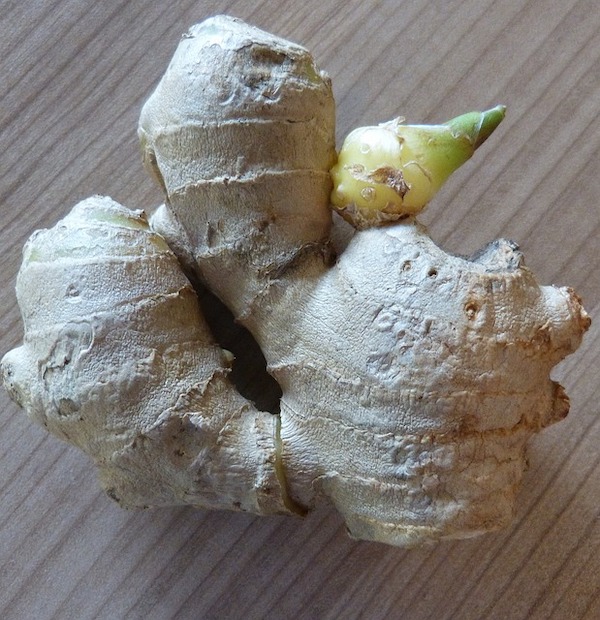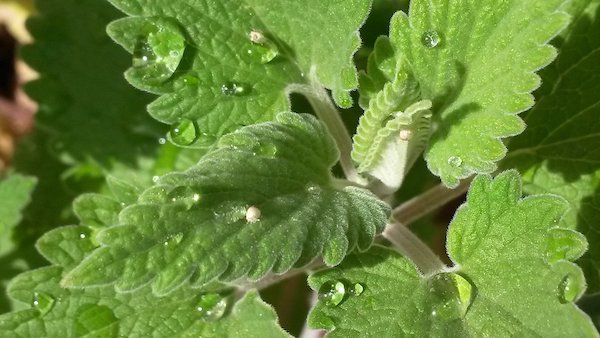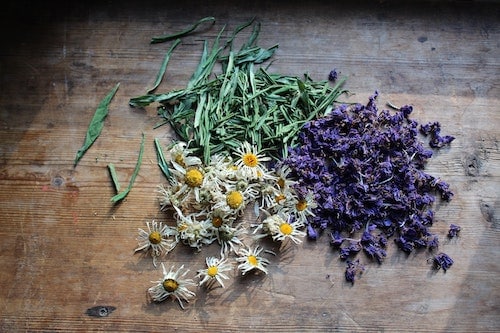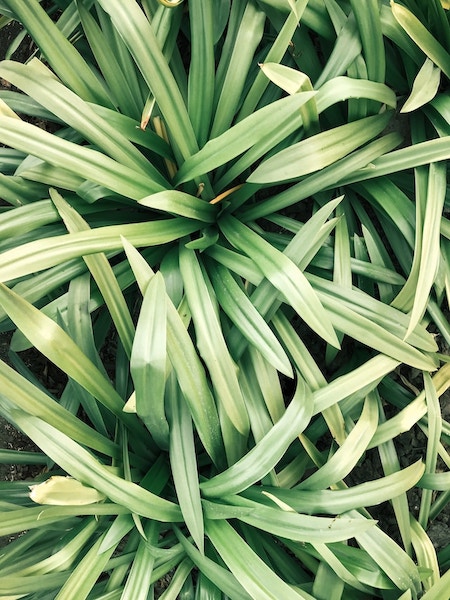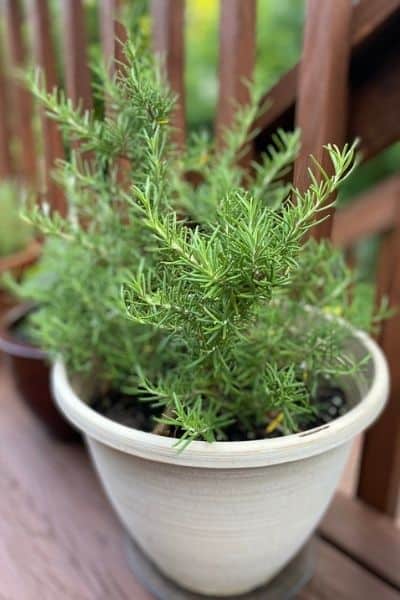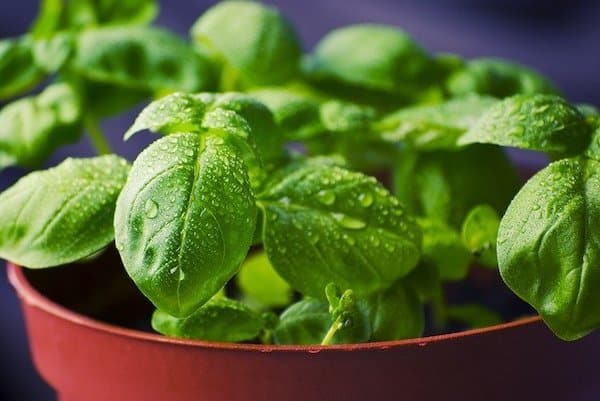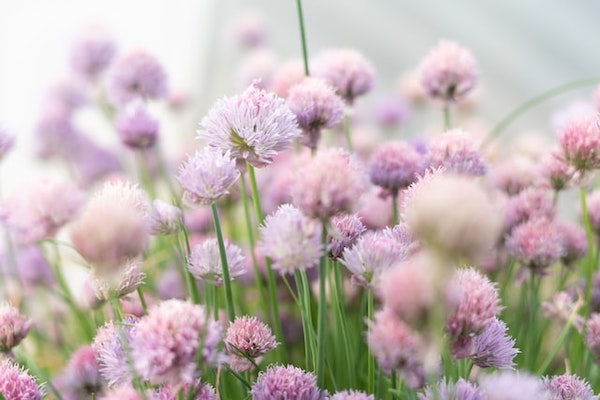Growing ginger in pots
Step-by-step guide to growing ginger in containers
Spicy and invigorating, ginger root makes a flavorful addition to a wide range of dishes, including curries, soups and even breakfast smoothies. Growing ginger in pots is easy with the right conditions and some patience, so even if you have a limited growing space, you can still harvest fresh, homegrown ginger right in your backyard!
Ginger (Zingiber officinale) is an herbaceous, flowering perennial. Ginger root is actually a mass of roots known as a rhizome, which is how we plant ginger and the part we harvest for culinary use. A close cousin of turmeric and cardamom, ginger originated in Southeast Asia and was one of the first spices exported in the early days of the spice trade.
If you love cooking with ginger, it can be rewarding to grow your own!
Read on for all the details about how to grow ginger in pots, from rhizomes to plant care to harvest.
This post may contain affiliate links. If you buy something through these links, we may earn a small commission at no cost to you.
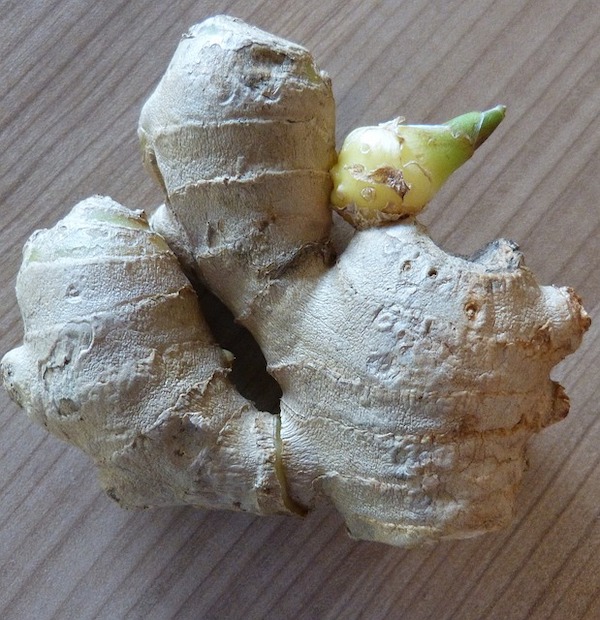
How to grow ginger in pots
Ginger is a beginner-friendly plant that grows well in in-ground gardens and containers too. If you want to learn how to grow ginger, it helps to understand this plant’s natural environment.
Native to Asia, ginger can be found in warm, tropical areas with dappled light and plenty of moisture.
In a container garden, ginger will grow best in rich, well-draining soil, and pots should be located in a spot that receives part shade. Too much bright sun can cause leaf damage to your ginger, and you definitely don’t want that!
To give your plants a head start on the growing season, consider amending your soil with a bit of compost, aged manure, or slow-release fertilizer before planting your rhizomes.
Does ginger grow well in containers?
Ginger doesn’t take up much space, and its root system is relatively shallow, which makes this plant perfectly suited for container growing. Even better, because ginger is a warm season crop, keeping it in containers can make it much easier to grow in cold climates. It can even be overwintered indoors!
Since it needs partial shade, growing ginger in containers helps because you can move them around to avoid full sun.
Growing ginger from rhizomes
Ginger can be started outdoors or indoors, but keep in mind it takes these plants about 8 to 10 months to reach maturity, so many gardeners choose to pre-sprout ginger rhizomes indoors in mid-winter.
To pre-sprout ginger:
- Layer a few inches of moist compost onto a flat seedling tray and place your ginger rhizome pieces on top.
- Position the rhizomes so their buds face up.
- Cover your ginger with an inch or two of compost or potting soil, add a humidity dome over your tray and a heating pad beneath it, and keep the soil well-watered until you see sprouts emerge. (This propagator with humidity dome and best-selling seed starting heat mat would be perfect!)
- Once your ginger spouts, repot into a larger container, burying rhizomes about 2 to 3” deep. Rhizomes can be planted in individual pots or, if you have a larger container, sow several rhizomes together, spacing them 8 to 12” from each other. Place in partial shade after all danger of frost has passed. If they’re still inside after planting, position your containers under grow lights and keep them well watered until you can move them outside.
As a warm weather crop, ginger shouldn’t be placed outdoors until the danger of frost has passed and temperatures are around 55°F at night. And of course, don’t forget to harden off your ginger plants before moving them outside! Learn more in my in-depth post about how to harden off.
Tip: You can plant whole rhizomes for an earlier harvest, or you can break the rhizomes into smaller sections to get more plants. If you choose to break your rhizomes apart, make sure each section has at least one eye or bud, and allow the sections to callous over on your countertop for about 24 hours before planting. This helps avoid rot.
Best containers for growing ginger
Ginger requires a well-draining, sturdy container at least 8” deep and 12” to 24″ wide. Since ginger grows horizontally, select as wide a pot as possible to encourage more rhizomes to develop.
Fabric grow bags are a good option, as they come in many different sizes and are made of a porous fabric that’s sturdy but won’t trap water. Terracotta or plastic containers can also work for ginger as long as they have drainage holes.
If you’re going with fabric grow bags (my favorite), try the 10-gallon or 15-gallon to be sure you have plenty of width.
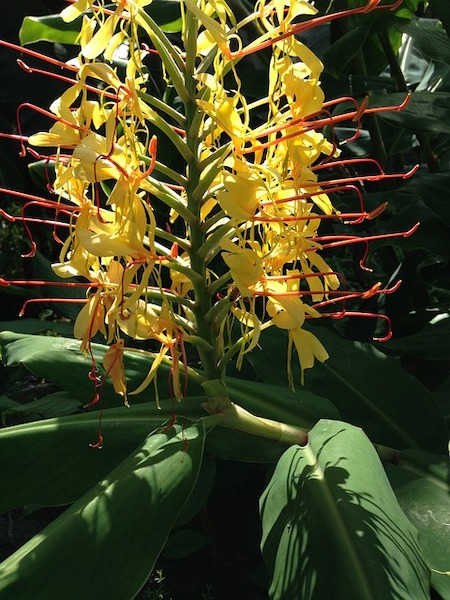
Growing ginger in pots
Ginger is a slow-growing plant, so you’ll need to have a bit of patience if you want to grow it. When pre-sprouting ginger, plants can take between 6 to 8 weeks to sprout, although this will depend on many factors, including temperature.
As ginger rhizomes grow, you can hill soil around the base of your plants just like you would hill potatoes. While hilling ginger isn’t required, it will encourage your plant to produce more rhizomes. I recommend mulching your container, to conserve soil moisture levels.
How often to water ginger
Ginger loves lots of moisture, and you’ll need to be water it regularly for proper growth. Generally speaking, at least 1 inch of water per week will be sufficient for ginger. But keep in mind, containers tend to dry out quicker than in-ground gardens, so it’s important to check your ginger regularly to make sure it doesn’t dry out.
Fertilizer for ginger in pots
Before planting ginger, amend your soil with compost or slow-release fertilizer to support its growth. Then fertilize your ginger after it sprouts and repeat fertilizer applications every few weeks throughout the growing season.
Liquid or granular fertilizers can be used on ginger; however, they should be applied as a side dressing at least 10 to 12” away from the base of the plant since ginger doesn’t like direct fertilizer applications.
Note: While balanced fertilizers can be used in a pinch, ginger will grow better with a low nitrogen fertilizer. Too much nitrogen in your soil can reduce rhizome size and produce an abundance of leaves instead. Jobe’s Organics Tomato & Vegetable fertilizer is a great option with a 2-5-3 NPK ratio.
Common pests for ginger
Ginger doesn’t attract as many insects as some other edible plants, but it does have a few common pests.
Aphids
Aphids feed on plant sap and cause leaf discoloration and distorted growth. To treat aphids infestations, spray your plant with your garden hose and then apply an organic insecticidal soap or neem oil spray. If you’d like to make your own insecticidal soap spray, just mix a few drops of Castille soap and a tablespoon or two of neem oil into a quart of water and blend well.
Mealybugs and scale
Mealybugs and hard-bodied scale are both scale insects that feed on plant sap. Hard-bodied scale look like small, brown warts on plant leaves and stems, while mealybugs are white and have a cottony appearance. Dabbing a bit of rubbing alcohol onto scale insects is an effective treatment option.
Rhizome rot
Overly saturated soil can cause waterlogged conditions and promote rhizome rot. To avoid this, be careful not to overwater your plants. While ginger loves moisture, soil should never be soggy.
Best companion plants for ginger
Ginger grows well with many different plants; however, there are few plants that make exceptional companions for ginger. Below are some of the best plants to grow beside your ginger roots.
Lemongrass
Lemongrass and ginger have similar growing needs, and they are often used together in recipes. Additionally, lemongrass’ strong scent can repel some of the most common ginger pests and keep your plant insect-free.
Chili peppers
Chili peppers are also frequently used alongside ginger in an assortment of recipes. Growing these plants together will ensure you always have fresh ingredients for making your favorite dishes.
Turmeric
Turmeric and ginger are both grown for their edible rhizomes, and they have similar growing needs. Both plants love moisture and heat, and their small size makes them especially well-suited for container gardens.
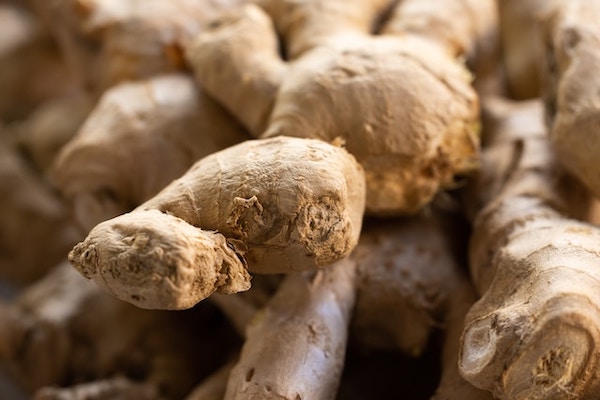
Ginger growing stages
How long does ginger take to grow? And how do I know when it’s time to harvest ginger?
These questions and others are very common among gardeners who are new to keeping ginger, but this plant is simple to grow as long as you provide it with heat, moisture and light.
After sprouting, ginger will produce tall, grass-like leaves that reach about 3 to 4’ in height. Once the leaves form, ginger rhizomes will develop and they can spread 2’ wide.
While ginger is a slow grower and can take between 8 to 10 months to reach full maturity, ginger rhizomes can be harvested as soon as they begin to fill out.
How to harvest ginger
Ginger can be harvested throughout the growing season when rhizomes begin to develop.
You can dig up just a few pieces of ginger by gently reaching into the soil at the base of your plant and snapping off a piece or two of the rhizome.
If you’d prefer to harvest your entire ginger plant all at once, wait until late summer to early fall. Ginger won’t grow as much towards the end of the season and it won’t survive a frost if kept outdoors, so this is a great time to pick your crop.
To harvest an entire ginger plant, simply pull up the plant or use a hand trowel to gently loosen up the dirt around the rhizomes if they’re difficult to dislodge.
After you’ve pulled up your ginger, cut away the leaves and then rinse your rhizomes off to remove any soil.

How to store ginger
Any damaged ginger root should be used immediately, as it won’t store well.
Fresh, unpeeled ginger roots will last in the fridge for about three weeks. You can extend the life of your ginger by keeping it in a paper bag in your crisper drawer. Avoid wrapping ginger tightly in plastic, as this can promote mold growth.
Peeled ginger also stores beautifully in the freezer and can be kept fresh for about 6 months. You can freeze whole, peeled ginger root or finely grate it and freeze it in ice cube trays to make it easier to work with when you’re ready to cook.
Ginger can also be dehydrated and ground into a fine powder with a spice mill. After preparing your ginger powder, store in an airtight container out of direct sunlight.
Ginger recipes
- Carrot ginger soup
- Martha Stewart’s ginger pumpkin bread
- Healthy and comforting simple ginger tea
- Lemon ginger tea
- Ginger chicken stir fry
- Gingerbread cookies (extra zingy when you use fresh ginger!)
More ideas for growing herbs in containers
- Growing sage in pots
- How to grow catnip in pots
- Growing basil in pots
- Growing chamomile in pots
- Growing cilantro in pots
- How to grow lavender in pots
- Growing chives in pots
- Growing lemongrass in pots

